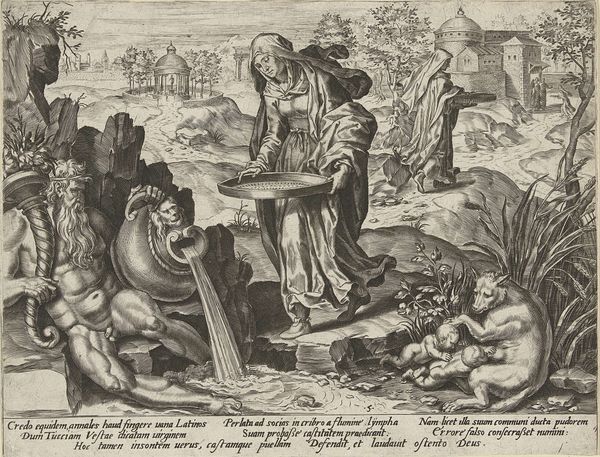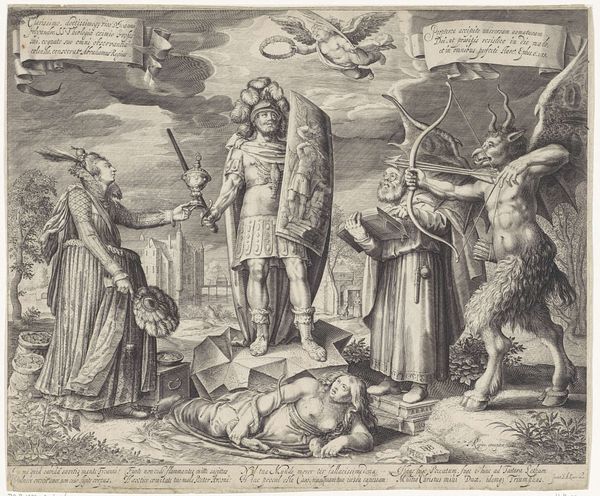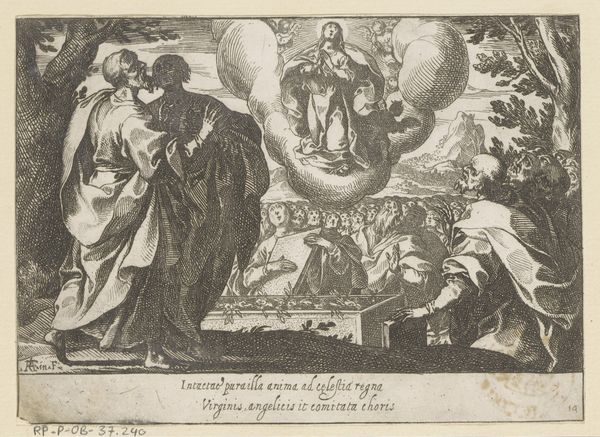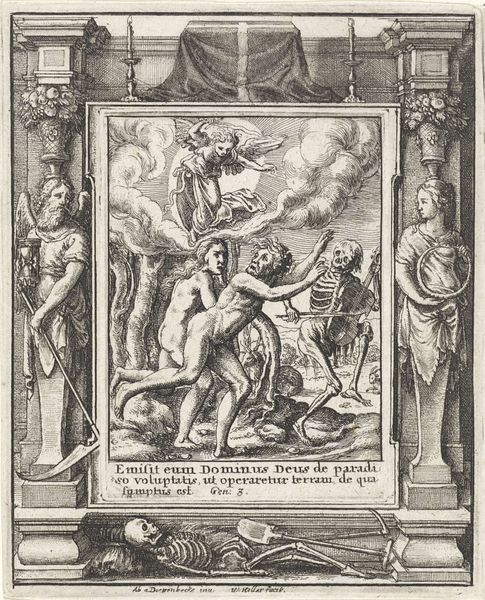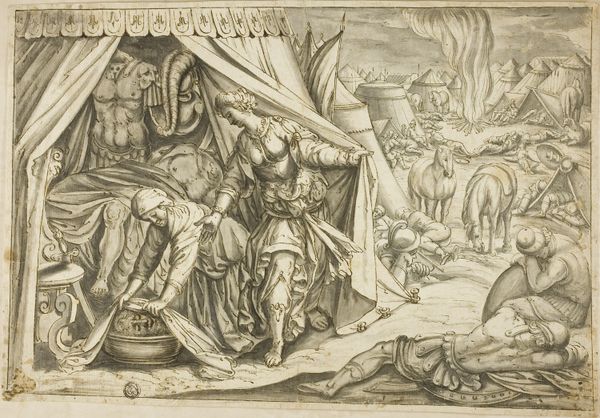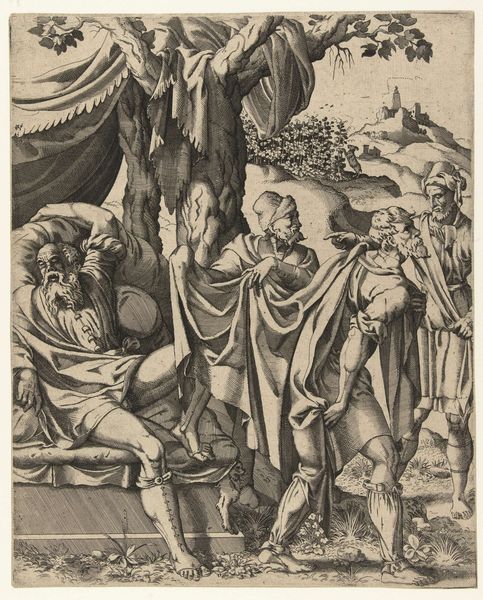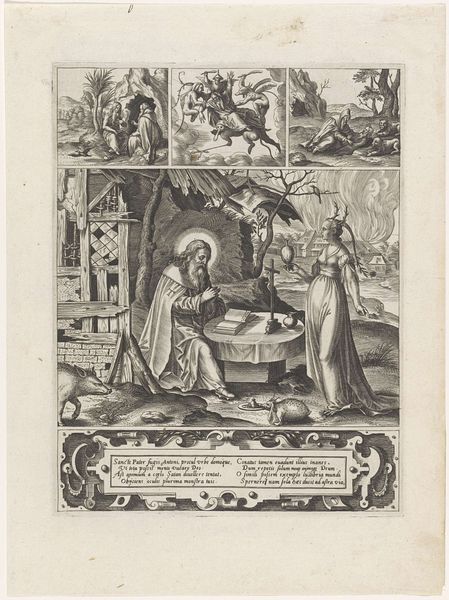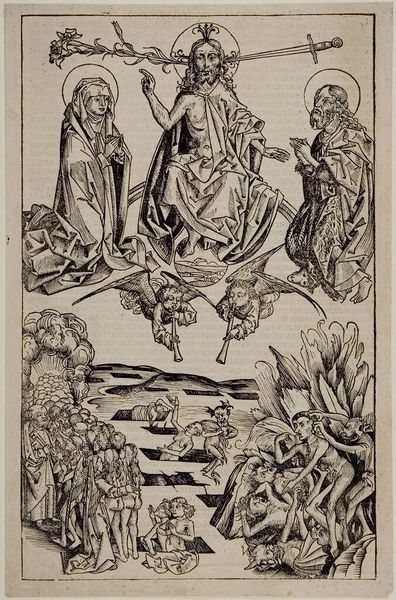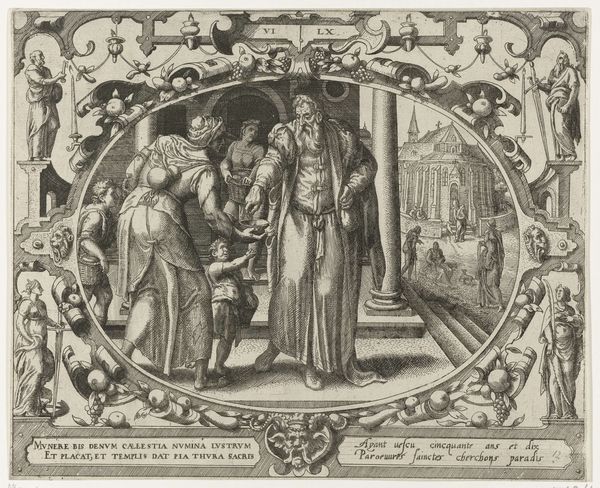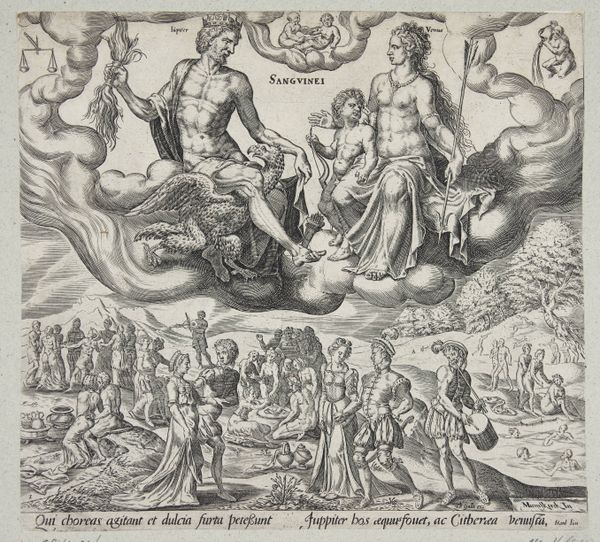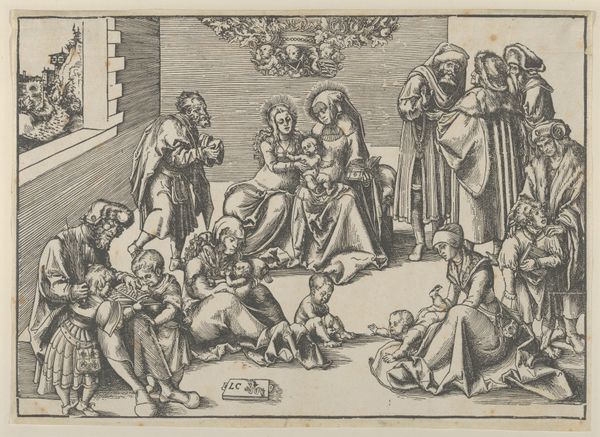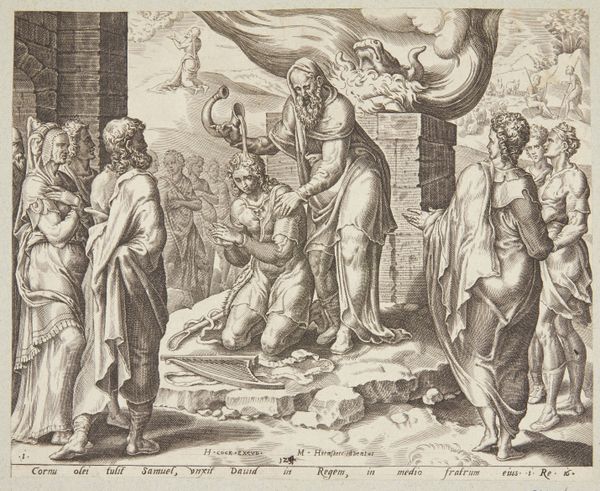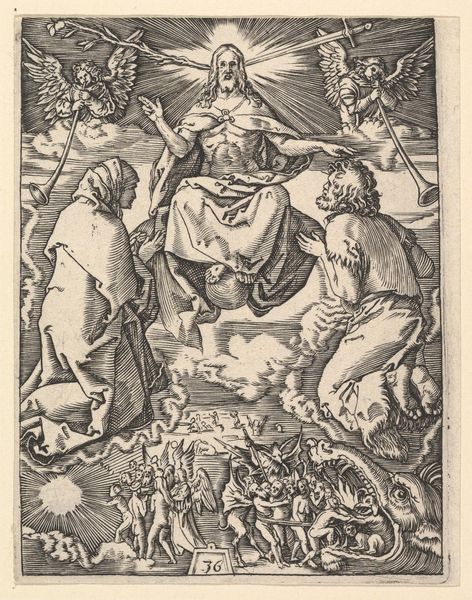
Saint Mary the Egyptian and Saint Mary Magdalen c. 1500 - 1503
0:00
0:00
print, engraving
# print
#
figuration
#
history-painting
#
northern-renaissance
#
engraving
Dimensions: 7 1/8 x 8 in. (18.1 x 20.32 cm) (image)
Copyright: Public Domain
Israhel van Meckenem created this engraving of Saint Mary the Egyptian and Saint Mary Magdalen in the late 15th century. The iconography reflects their shared role as penitent women, transformed from lives of sin to sainthood. Note the chalice held by Mary Magdalen, a symbol of her association with the Eucharist, and the skull, a memento mori referring to the transience of life. On the left, Mary the Egyptian, nearly naked and holding three loaves of bread, embodies her years spent in the desert. These symbols are not unique to this time, they are also found in many paintings from different eras. Consider the act of repentance itself—a theme resonating across centuries. The emotional weight of guilt and redemption connects us to these figures. The Magdalen's tears, the Egyptian's isolation—gestures of profound transformation—are emotional expressions that transcend time. These images reappear through history in myriad contexts, often shifting meaning. Yet, they remain potent, engaging us on a subconscious level. They are echoes of our collective memory.
Comments
minneapolisinstituteofart almost 2 years ago
⋮
These two former prostitutes offer rather extreme models of redemption. Mary of Egypt made a pilgrimage to Jerusalem to see the cross on which Jesus died, but an invisible force barred her from the shrine. Upon praying to the Virgin for help, pledging to live in chastity, she gained entrance and paid homage to the cross. A stranger then gave her three silver coins with which she purchased three loaves of bread. The loaves became her entire sustenance for her subsequent forty-seven-year sojourn in the desert. Mary Magdalen holds a jar containing the perfume she used, along with her tears, to anoint Jesus’s feet. After witnessing his crucifixion and resurrection, she lived in the desert for thirty years, consuming neither food nor water and raised to heaven by angels several times each day. Both women eventually received communion and promptly died thereafter.
Join the conversation
Join millions of artists and users on Artera today and experience the ultimate creative platform.
